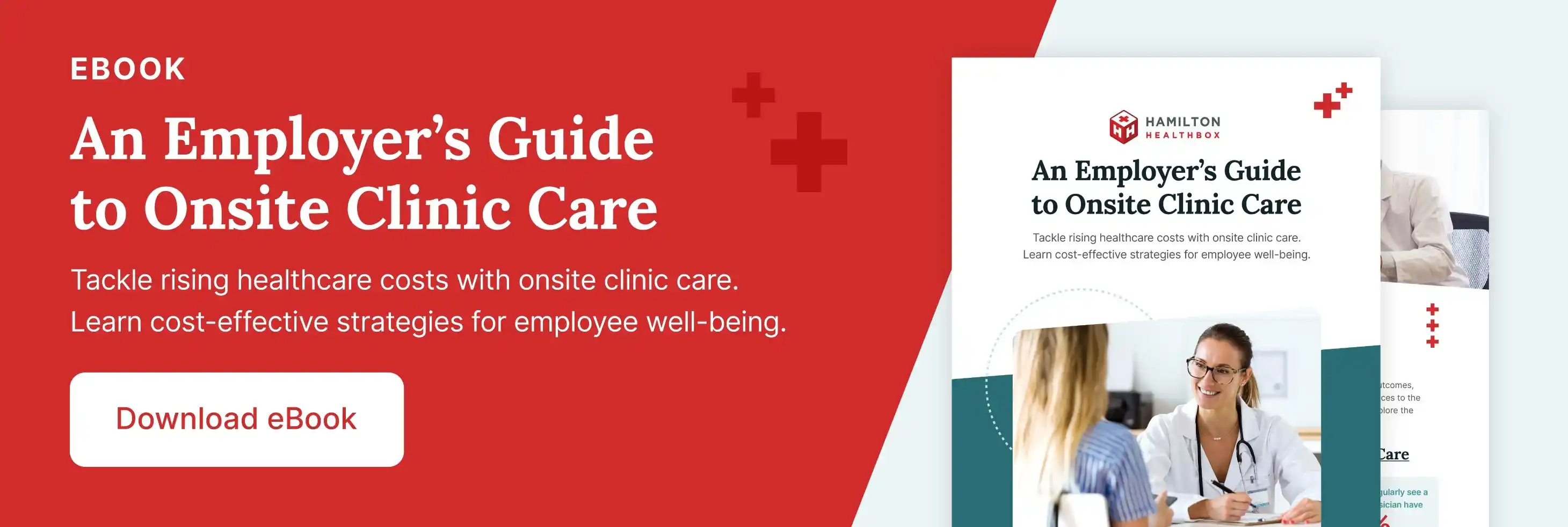
In advanced countries like the U.S., about one-third of economic growth during the past century can be chalked up to health improvements. In fact, recent research has found that health has contributed almost as much to income growth as education, showing that economics is closely tied to the health of any given population. With this perspective in mind, an increasing number of employers are evaluating the relationship between the physical and mental well-being of their workers and the strength of their business and focusing on improving employees’ health.

Organizations that prioritize workplace health are motivated by a number of factors, including:
-
Reduced healthcare costs
At the most basic level, the healthier your employees are, the less you will eventually have to spend. Preventive measures, such as health and wellness programs, might cost more upfront, but long term, these investments pay off. Healthy employees are sick and injured less often, which, in turn, leads to lower insurance costs for employers.
-
Decreased absenteeism
The healthier employees are, the more productive they will likely be since they won’t need to miss work for illness. For example, overweight and obese men miss approximately two more work days per year than normal-weight men, constituting a 56% increase in missed days. It’s also worth considering that fewer absent workers can also reduce the amount of overtime pay that accumulates when covering for them.
-
Diminished presenteeism
“Presenteeism” may be a new term to some, but it’s a familiar phrase in the workplace. Presenteeism occurs when employees physically report to their job, but chronic illness or mental health challenges such as depression prevent them from working to their full ability. A study from the American Psychological Association found that chronic workplace stress negatively impacts employees’ performance at work, with nearly three in five employees reporting physical and mental symptoms, including cognitive weariness; lack of energy, interest and/or motivation; and difficulty focusing. The Harvard Business Review estimates that presenteeism costs the U.S. economy more than $150 billion a year in lost productivity, which far surpasses annual absenteeism costs. Offering workplace health programs that provide resources for mental health issues can help your employees feel better, which in turn, will help them perform better.
-
Improved recruitment and retention
Workplace stress is so common that a recent study found that 71% of employees experience some form of chronic stress at work. In fact, employees who reported regularly feeling stressed or tense were three times more likely to seek new job opportunities within the following year. Companies offering workplace health programs send the message that they care about their employees’ mental and physical health. This is important not only for retaining current employees but for attracting new workers as well.
What Strategies Can Support Employee Health Engagement?
No matter how many high-quality health and well-being programs you provide, if your employees don’t use them, the impact of your offerings will be minimal. This seems to be a problem facing many organizations, with approximately 80% of employees using few, if any, medical services in a year. With American workers substantially less healthy than those in other countries, more emphasis must be placed on engaging our workforce in health and wellness activities. But how can that be done?
Based on its research, Gartner identified three ways employers can support employees’ health engagement among their workers:
-
Increase employee understanding of well-being needs and offerings.
Gartner found that in many organizations, workers simply didn’t know what help was available to them. Increasing employee awareness of workplace health is foundational to engagement. Using the experiences of upper-level staff can help personalize the effectiveness of employer-sponsored programs.
-
Reduce well-being stigma and apathy.
Employees may not be motivated to act for a number of reasons, including fear or self-consciousness. Managers can play a significant role in helping their direct reports overcome these obstacles. For example, Australia’s Great Southern Bank developed tools to guide managers on ways to initiate conversations about workplace health and direct employees to support options.
-
Make it convenient to participate in well-being programs.
According to Gartner’s research, among those employees who indicated they could have participated in a well-being program but didn’t, 38% said they were too busy to do so. Some companies sponsor ongoing “well-being competitions,” such as a steps challenge, while others integrate well-being activities into the normal routine of the workday. Others provide onsite clinics, making it convenient for employees to seek treatment without taking extra time out of their days.

How Can Employer-Based Health Clinics Aid These Efforts?
Employees may have difficulty accessing health services because of the time involved in leaving work and traveling to a healthcare provider’s office. The convenience of onsite and employer-based health clinics increases engagement, reduces costs, and enhances productivity. A survey of employers offering onsite centers found that:
A total of 64% of respondents experienced a reduction in medical care costs
Nearly 70% realized reduced time lost by employees leaving work to see outside medical providers
63% saw reduced use of the emergency room
By providing healthcare services in the workplace, employers offering self-funded health benefits may see lowered and more predictable total costs of care. Organizations like Healthbox™, which provides onsite primary care services, have seen their clients achieve:
|
$132 |
3.5x |
|
37% |
43% |
46% |
Learn more about onsite care options for your employees. Healthbox™ staff can recommend onsite care approaches to best meet your needs and walk through a custom cost-benefit calculation based on the characteristics of your employee population.

